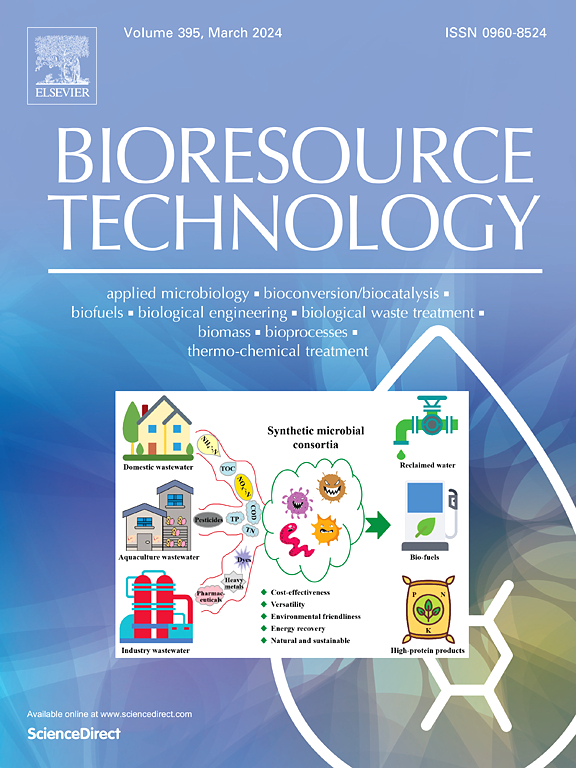从废物到财富:探索颗粒大小对从好氧颗粒污泥中获取生物聚合物的影响。
IF 9
1区 环境科学与生态学
Q1 AGRICULTURAL ENGINEERING
引用次数: 0
摘要
本研究旨在研究好氧颗粒污泥(AGS)大小对其性质和海藻酸盐样外聚合物(ALE)回收潜力的影响。在实验室规模的生物反应器中培养AGS,并以200 μm为间隔将其分为6个大小级。在400 ~ 800 μm之间形成了稳定AGS结构和良好ALE回收率的临界尺寸。ags400 ~ 600μm的疏水性为74.36 %,密度为1037 g/L。此外,ALE600-800μm的ALE产率最高(388 mg/g VSS),其eps生产者丰度较高(35.1% %),而ALE400-600μm的PN含量高于其他样品。同时,对ALE和AGS内金属元素的浓度测定表明ALE内金属元素不存在生物积累。该研究为从AGS中回收生物聚合物提供了深入的了解,为通过调节AGS的大小来开发新的资源回收策略铺平了道路。本文章由计算机程序翻译,如有差异,请以英文原文为准。

From waste to wealth: Exploring the effect of particle size on biopolymer harvesting from aerobic granular sludge
This study aimed to examine the impact of aerobic granular sludge (AGS) sizes on its properties and alginate-like exopolymers (ALE) recovery potential. The AGS was cultivated in a lab-scale bioreactor and categorized into six size classes with 200 μm intervals. There appeared a critical size (400–800 μm) for developing stable AGS structure and excellent ALE recovery. A higher hydrophobicity (74.36 %) and density (1,037 g/L) was observed in AGS400-600μm than other sizes. Moreover, the highest ALE yield was obtained in ALE600-800μm (388 mg/g VSS) for its higher abundance of EPS-producers (35.1 %), while the PN content of ALE400-600μm was higher than other samples. Meanwhile, the concentrations of metal elements within the ALE and AGS identified that there was no bio-accumulation of metal elements in the ALE. This study offers an in-depth understanding of biopolymer recovery from AGS, paving the way for a novel resource recovery strategy through the regulation of AGS sizes.
求助全文
通过发布文献求助,成功后即可免费获取论文全文。
去求助
来源期刊

Bioresource Technology
工程技术-能源与燃料
CiteScore
20.80
自引率
19.30%
发文量
2013
审稿时长
12 days
期刊介绍:
Bioresource Technology publishes original articles, review articles, case studies, and short communications covering the fundamentals, applications, and management of bioresource technology. The journal seeks to advance and disseminate knowledge across various areas related to biomass, biological waste treatment, bioenergy, biotransformations, bioresource systems analysis, and associated conversion or production technologies.
Topics include:
• Biofuels: liquid and gaseous biofuels production, modeling and economics
• Bioprocesses and bioproducts: biocatalysis and fermentations
• Biomass and feedstocks utilization: bioconversion of agro-industrial residues
• Environmental protection: biological waste treatment
• Thermochemical conversion of biomass: combustion, pyrolysis, gasification, catalysis.
 求助内容:
求助内容: 应助结果提醒方式:
应助结果提醒方式:


